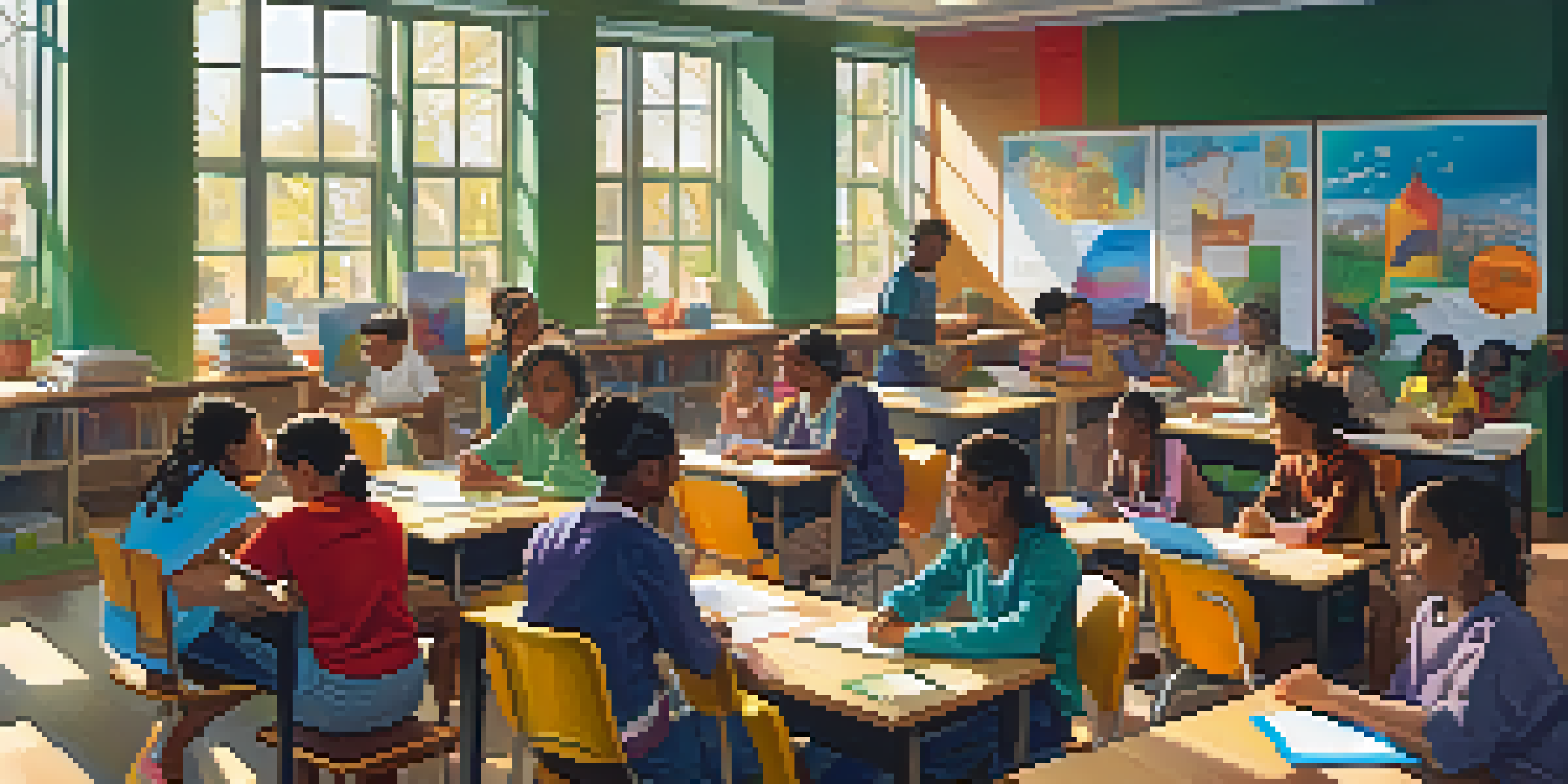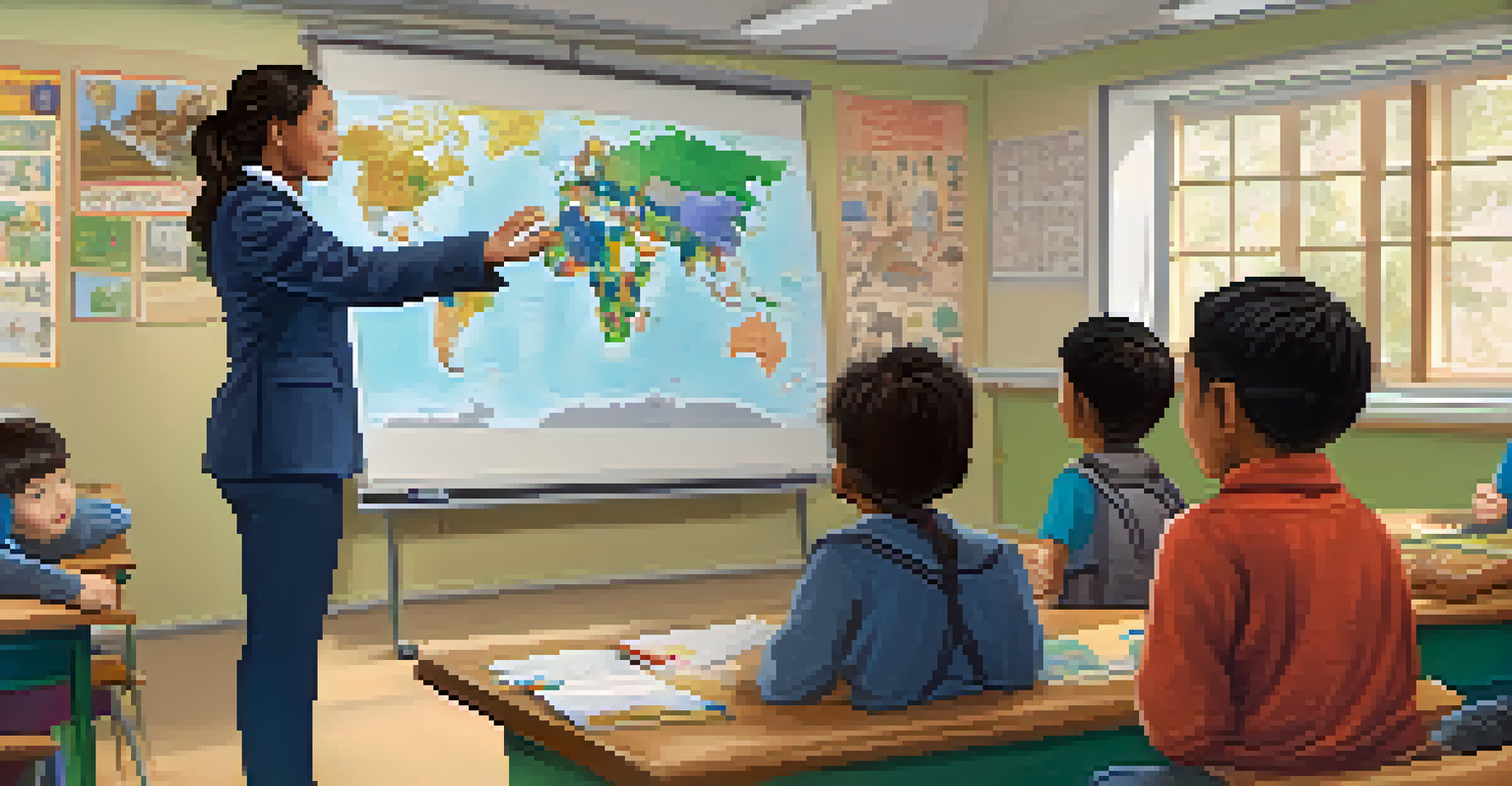Developing Critical Consciousness Through Culturally Relevant Education

Understanding Critical Consciousness in Education
Critical consciousness is the ability to analyze and challenge social injustices. It's about recognizing that education isn't just about facts; it's a powerful tool for change. By developing critical consciousness, students can become more aware of their surroundings and the societal structures that shape their lives.
Education is the most powerful weapon which you can use to change the world.
Incorporating critical consciousness into education encourages students to ask questions and seek deeper meanings in what they learn. For instance, instead of simply memorizing historical dates, students might explore the implications of those events on various communities. This approach leads to a more engaged and thoughtful learning experience.
Ultimately, fostering critical consciousness helps students develop a sense of agency. They learn that they can influence the world around them, which is vital for personal growth and societal progress. This foundation prepares them to advocate for themselves and others, making education a transformative experience.
The Role of Culturally Relevant Education
Culturally relevant education connects learning to students' cultural backgrounds and experiences. It recognizes that students come from diverse backgrounds and that these differences enrich the classroom environment. By valuing each student's culture, educators can create a more inclusive and meaningful learning space.

When students see their culture reflected in the curriculum, it boosts their self-esteem and engagement. For example, incorporating literature from various cultures can spark interest and discussion. This relevance not only makes learning more relatable but also encourages students to take pride in their identities.
Critical Consciousness Empowers Students
Developing critical consciousness helps students recognize and challenge social injustices, fostering personal growth and agency.
Moreover, culturally relevant education helps break down stereotypes and fosters mutual respect among students. As they learn about each other's cultures, they develop empathy and understanding. This environment not only promotes academic success but also nurtures a sense of community and belonging.
Key Principles of Culturally Relevant Pedagogy
Culturally relevant pedagogy is grounded in three key principles: academic success, cultural competence, and critical consciousness. These principles work together to ensure that students not only excel academically but also develop a strong sense of identity. Teachers play a crucial role in integrating these elements into their teaching practices.
The function of education is to teach one to think intensively and to think critically. Intelligence plus character – that is the goal of true education.
Academic success emphasizes high expectations for all students, regardless of their background. This principle encourages educators to provide the necessary support and resources to help every student thrive. By focusing on success, teachers can challenge students to reach their full potential.
Cultural competence involves understanding and appreciating students' cultural backgrounds. Educators who embrace this principle create lessons that resonate with their students' experiences. This connection fosters a deeper understanding of the material and enhances students' engagement and motivation.
Strategies for Implementing Culturally Relevant Education
Implementing culturally relevant education requires intentional planning and reflection. Educators can start by assessing their own biases and understanding how their backgrounds influence their teaching. This self-awareness is essential for creating an inclusive classroom environment.
One effective strategy is to incorporate diverse resources and materials into lessons. For example, using texts by authors from various cultural backgrounds can provide multiple perspectives on a topic. This approach not only enriches discussions but also fosters critical thinking.
Culturally Relevant Education Engages
Connecting learning to students' cultural backgrounds enhances engagement and self-esteem, creating a more inclusive classroom environment.
Additionally, engaging students in discussions about their cultural experiences can be incredibly impactful. Encouraging students to share their stories creates a sense of ownership in the learning process. This practice not only validates their identities but also cultivates a supportive classroom community.
Assessing the Impact of Culturally Relevant Education
Assessing the effectiveness of culturally relevant education involves looking beyond traditional metrics. While test scores are important, they don't capture the full impact of culturally responsive teaching. Educators should consider student engagement, participation, and overall well-being as crucial indicators.
Qualitative assessments, such as student reflections and feedback, can provide valuable insights into the learning experience. These reflections allow educators to understand how students perceive their learning environment and whether they feel valued. This information is essential for continuous improvement.
Moreover, monitoring changes in students' critical consciousness can serve as an indicator of success. If students are actively questioning societal norms and advocating for themselves and others, it's a sign that culturally relevant education is making a positive impact.
Challenges in Culturally Relevant Education
Despite its benefits, implementing culturally relevant education can present challenges. One significant hurdle is the lack of resources and training for educators. Many teachers may not feel adequately prepared to address diverse cultural perspectives in their classrooms.
Additionally, systemic barriers can hinder the effective implementation of culturally relevant pedagogy. For example, standardized testing often prioritizes a narrow set of knowledge that may not reflect the diversity of student experiences. This can lead to a disconnect between what students learn and what is relevant to their lives.
Assessing Impact Beyond Test Scores
Effective assessment of culturally relevant education should consider student engagement and critical consciousness alongside traditional metrics.
Overcoming these challenges requires a collective effort from educators, administrators, and communities. Supportive professional development and resource allocation are essential to empower teachers. By addressing these barriers, we can create a more inclusive and equitable educational landscape.
The Future of Culturally Relevant Education
The future of education is leaning towards inclusivity and relevance, making culturally relevant education more crucial than ever. As our society continues to diversify, schools must adapt to meet the needs of all students. This evolution will help prepare future generations to thrive in a multicultural world.
Technology also plays a significant role in shaping the future of culturally relevant education. With access to diverse resources and global perspectives online, educators can enrich their curriculum in ways that were previously unimaginable. This access allows for a more comprehensive understanding of different cultures and histories.

Ultimately, fostering critical consciousness through culturally relevant education can create empowered learners who are prepared to enact social change. As we move forward, prioritizing these educational approaches can lead to a more just and equitable society, one classroom at a time.